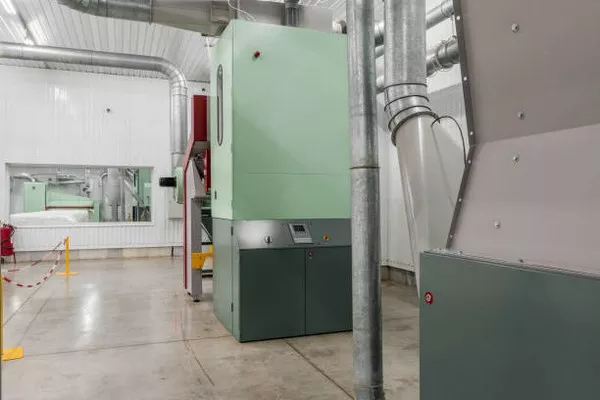The world’s growing energy demands and the urgency of addressing environmental concerns have led to the exploration of sustainable and eco-friendly energy sources. Among these, biogas stands out as a promising renewable energy alternative. Biogas, a mixture of methane and carbon dioxide produced through the natural breakdown of organic matter, is harnessed using biogas generators. This article delves into the inner workings of biogas generators, highlighting their significance as a clean and efficient energy source.
Biogas Generation: A Sustainable Solution
Biogas, often referred to as nature’s own fuel, is generated through a natural process known as anaerobic digestion. Anaerobic digestion occurs in the absence of oxygen, typically in specialized facilities called anaerobic digesters. These digesters provide the ideal conditions for microorganisms to break down organic matter, such as agricultural waste, sewage sludge, and food scraps, into biogas and nutrient-rich byproducts.
The Anaerobic Digestion Process
The heart of a biogas generator is the anaerobic digester, where the magic of biogas production takes place. The process can be broken down into four key stages: substrate preparation, hydrolysis and acidogenesis, acetogenesis, and methanogenesis.
Substrate Preparation: In this initial phase, organic materials, including animal manure, crop residues, and organic waste, are collected and prepared for digestion. The materials are typically mixed and, in some cases, pre-treated to enhance the breakdown process.
Hydrolysis and Acidogenesis: Once the substrate is prepared, hydrolytic bacteria begin the decomposition process by breaking down complex organic molecules into simpler compounds. During this stage, carbohydrates, proteins, and fats are converted into organic acids and volatile fatty acids.
Acetogenesis: Next, acetogenic bacteria transform the organic acids produced in the previous stage into acetic acid, hydrogen, and carbon dioxide. This step is crucial as it prepares the way for the final stage of methane production.
Methanogenesis: Methanogenic archaea, the heroes of biogas production, convert acetic acid, hydrogen, and carbon dioxide into methane and carbon dioxide. This biogas, primarily composed of methane (CH4) and carbon dioxide (CO2), is then collected and ready for use.
Biogas Generator Components
Biogas generators play a vital role in capturing, storing, and utilizing the biogas produced during anaerobic digestion. Here is a breakdown of the key components of a biogas generator:
Anaerobic Digester: The heart of the system, the anaerobic digester, provides the controlled environment needed for microbial activity. These digesters come in various designs, including batch, continuous stirred tank, and plug-flow digesters, each suited to different applications and feedstocks.
Gas Storage: The biogas generated must be collected and stored for later use. Gas storage systems typically consist of gas holders or gas bags that allow for the accumulation and regulated release of biogas.
Gas Cleaning and Upgrading: Raw biogas contains impurities, such as hydrogen sulfide (H2S) and moisture, which can be harmful to engines and equipment. Gas cleaning and upgrading systems remove these impurities to ensure a high-quality biogas product.
Distribution and Utilization: Once cleaned and upgraded, biogas can be used directly for heating, electricity generation, or as a vehicle fuel. Biogas engines and turbines are commonly used to convert biogas into electrical or mechanical power.
Electricity Generation from Biogas
One of the primary applications of biogas generators is electricity generation. Biogas engines, which operate similarly to natural gas engines, are commonly used to convert the energy stored in biogas into electricity.
Engine Operation: Biogas engines are designed to run on biogas, which is delivered to the engine via a pipeline. The engine burns the methane in the biogas, causing it to expand rapidly and drive a piston. This piston’s movement generates mechanical energy.
Electricity Generation: The mechanical energy produced by the engine is connected to an electrical generator. As the engine drives the generator, it rotates a coil within a magnetic field, inducing an electrical current. This current is then converted into electricity and can be used to power homes, businesses, or even entire communities.
Benefits of Biogas Generators
Biogas generators offer several compelling advantages, making them an attractive energy solution:
Renewable Energy: Biogas is produced from organic waste, a resource continually generated by agriculture, food processing, and wastewater treatment. This makes biogas a renewable energy source.
Reduced Greenhouse Gas Emissions: Anaerobic digestion captures methane, a potent greenhouse gas, and converts it into a less harmful form (carbon dioxide). By doing so, biogas generators help mitigate climate change.
Waste Management: Biogas production provides an environmentally friendly solution for managing organic waste, reducing the need for landfill disposal and decreasing odors and pollution associated with waste decomposition.
Energy Independence: Biogas generators offer energy independence to farms, industries, and communities, reducing reliance on fossil fuels and providing a consistent and reliable energy source.
Conclusion
Biogas generators represent a sustainable and eco-friendly approach to energy generation. Through the natural process of anaerobic digestion, these systems transform organic waste into a valuable energy resource. By harnessing the power of biogas, we can reduce greenhouse gas emissions, minimize waste, and create a cleaner and more sustainable energy future. As technology continues to advance, biogas generators are poised to play an increasingly significant role in meeting our energy needs while protecting the environment.

